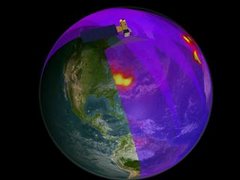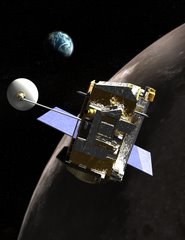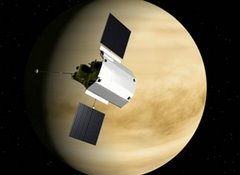
Hi all,
Here are some updates from NASA Earth Sciences, as tweeted earlier today:
NASA spending 1.5 billion on Earth Science in FY08
OSTM and OCO being launched this year
7 Earth Science missions in development
Dr. Alan Stern, Associate Administrator for Science Mission Directorate
NASA Earth Science: 14 Earth satellites in commission, 8 spacecraft to be launched in the next 5 years
Stern: Earth Science is one of NASA's "best kept secrets"
OSTM: Launch 6/16, GOES-O (weather satellite!) Launch 8/8; OCO Launch 12/15
Orbiting Carbon Observatory (OCO): First-time measurements of global carbon dioxide sources and sinks
Aquarius (Launch 2010): First time measurements of sea surface salinity from space
The A-Train is comprised of 5 satellites flying in close formation (including Aura!)
Synergy of spacecraft flying in close formation gives us more info than any one satellite flying alone
Six thematic areas of Earth science research: climate variability and change; atmospheric composition; weather; carbon cycle;
(cont): tectonic processes; water and energy cycles
NASA DC8 flying over boreal forest and examining impact of air pollution over arctic air masses - summer '08
NASA Earth science accomplishments 2007:
NASA observations have contributed to climate change projects (i.e.: IPCC Report)
QuickScat measured record decline in arctic sea ice cover
Area of sea ice lost: comparable to area of TX and CA combined
IceSAT: Arctic sea ice is thinning and shriking. Old ice is being replaced by newer, thinner sea ice
Aeronomy of Ice in the Mesosphere (AIM): Polar mesospheric clouds are forming more frequently and at lower latitudes than ever before
Polar Mesospheric cloud change is result of CO2 in atmosphere, cooling in upper atmosphere
Satellites characterized aftermath of Hurricane Katrina
Satellites imaged before and after changes in live vegetation wrt Katrina
NASA measures So Cal wildfires:
Aqua, EOS-1, and unmanned research aircraft got images of fires, showing smoke locations, fire hotspots, and near real-time data
Stay tuned: Specifics about Earth Science response to decadal survey. Once-per-month updates on NASA Earth Science programs and projects
OCO will help us understand the carbon cycle on scales of about 1,000 km, and understand non-anthropogenic background
Miles Brian (CNN): How does NASA plan to handle data gaps?
Stern: NASA satellites have proven to outlive their expectations by factors of 2 and 3. We have a balancing act btwn covering gaps
(cont): and new measurements
Miles Brian (CNN): Are we here because of a change in political climate?
Griffin: No. We are here because we do research, and we do Earth science research well, and we're proud of it.





No comments:
Post a Comment